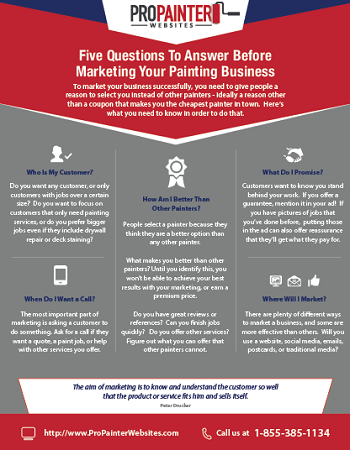Seasonal Factors In Commercial Exterior Painting: Secret Insights You Should Recognize
Seasonal Factors In Commercial Exterior Painting: Secret Insights You Should Recognize
Blog Article
Material Composed By-Leach Rosendal
When you're planning a business exterior painting task, seasonal aspects can make or damage your outcomes. You'll intend to take into consideration how temperature and moisture impact paint application and drying times. Selecting the best period can ensure your paint adheres correctly and lasts much longer. But which periods are genuinely the most effective for this type of work? Let's discover the crucial elements that can influence your job's success.
The Effect of Temperature Level on Paint Application
When you're planning an industrial outside paint task, the temperature can dramatically influence exactly how well the paint adheres and dries.
Preferably, you want to paint when temperature levels range between 50 ° F and 85 ° F. If it's too cold, the paint may not heal properly, leading to problems like peeling off or cracking.
On the flip side, if it's also warm, the paint can dry as well promptly, avoiding proper attachment and resulting in an unequal finish.
You need to likewise think about the time of day; early morning or late afternoon offers cooler temperatures, which can be more favorable.
Always check the manufacturer's recommendations for the certain paint you're making use of, as they frequently supply support on the optimal temperature range for optimum outcomes.
Humidity and Its Result on Drying Times
Temperature isn't the only environmental element that affects your commercial exterior painting project; humidity plays a substantial role also. High humidity degrees can reduce drying times drastically, influencing the overall high quality of your paint task.
When the air is filled with wetness, the paint takes longer to cure, which can cause concerns like inadequate attachment and a greater threat of mildew growth. If you're repainting on an especially humid day, be gotten ready for extended delay times in between layers.
It's crucial to monitor neighborhood climate condition and strategy accordingly. Ideally, aim for moisture levels between 40% and 70% for ideal drying out.
Keeping these factors in mind guarantees your job remains on track and provides an enduring coating.
Best Seasons for Commercial Exterior Painting Projects
What's the best season for your business exterior painting tasks?
Spring and very early fall are usually your best options. Throughout these periods, temperatures are mild, and humidity levels are commonly reduced, creating optimal conditions for paint application and drying.
Stay clear of summer's intense heat, which can trigger paint to dry also rapidly, bring about poor bond and surface. Likewise, winter season's chilly temperatures can prevent proper drying out and curing, risking the longevity of your paint job.
Go for days with temperature levels between 50 ° F and 85 ° F for optimal outcomes. Keep in mind to check the regional weather forecast for rain, as wet problems can ruin your project.
Planning around these aspects ensures your painting task runs smoothly and lasts longer.
Conclusion
To conclude, planning your business exterior paint tasks around seasonal factors to consider can make a considerable distinction in the outcome. By https://find-a-painter-near-me09763.blogripley.com/35047694/raise-your-living-room-discover-just-how-hiring-house-painters-can-function-marvels-for-your-home throughout the optimal temperature levels and moisture levels, you'll make certain far better attachment and drying times. Bear in mind to keep an eye on regional weather report and select the right time of year-- spring and early fall are your best choices. Taking color of ceiling paint same as walls will certainly assist you accomplish a resilient and expert surface that lasts.
